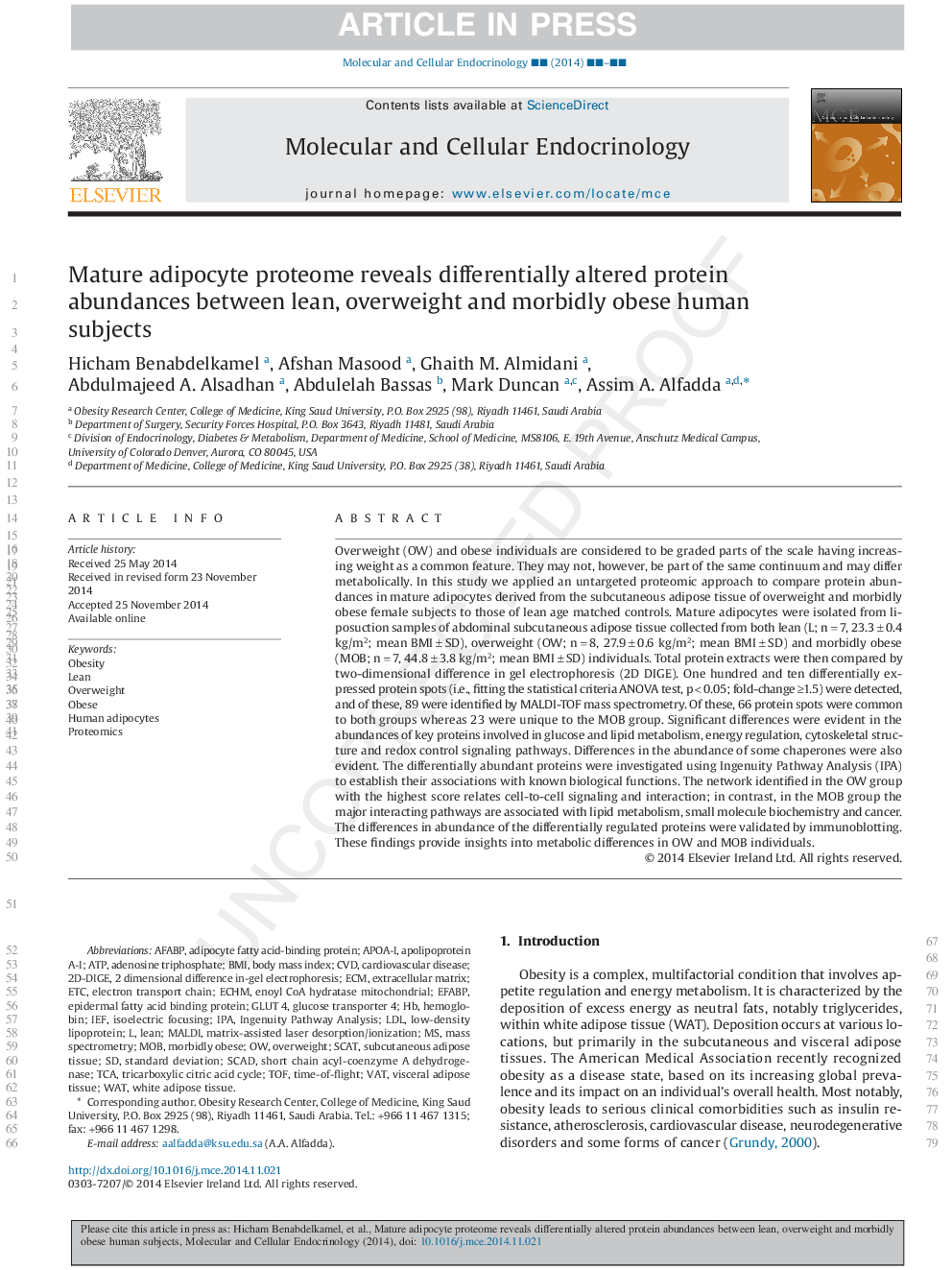| Article ID | Journal | Published Year | Pages | File Type |
|---|---|---|---|---|
| 8477092 | Molecular and Cellular Endocrinology | 2015 | 13 Pages |
Abstract
Overweight (OW) and obese individuals are considered to be graded parts of the scale having increasing weight as a common feature. They may not, however, be part of the same continuum and may differ metabolically. In this study we applied an untargeted proteomic approach to compare protein abundances in mature adipocytes derived from the subcutaneous adipose tissue of overweight and morbidly obese female subjects to those of lean age matched controls. Mature adipocytes were isolated from liposuction samples of abdominal subcutaneous adipose tissue collected from both lean (L; nâ=â7, 23.3â±â0.4 kg/m2; mean BMIâ±âSD), overweight (OW; nâ=â8, 27.9â±â0.6 kg/m2; mean BMIâ±âSD) and morbidly obese (MOB; nâ=â7, 44.8â±â3.8âkg/m2; mean BMIâ±âSD) individuals. Total protein extracts were then compared by two-dimensional difference in gel electrophoresis (2D DIGE). One hundred and ten differentially expressed protein spots (i.e., fitting the statistical criteria ANOVA test, pâ<â0.05; fold-change â¥1.5) were detected, and of these, 89 were identified by MALDI-TOF mass spectrometry. Of these, 66 protein spots were common to both groups whereas 23 were unique to the MOB group. Significant differences were evident in the abundances of key proteins involved in glucose and lipid metabolism, energy regulation, cytoskeletal structure and redox control signaling pathways. Differences in the abundance of some chaperones were also evident. The differentially abundant proteins were investigated using Ingenuity Pathway Analysis (IPA) to establish their associations with known biological functions. The network identified in the OW group with the highest score relates to-: cell-to-cell signaling and interaction; in contrast, in the MOB group the major interacting pathways are associated with lipid metabolism, small molecule biochemistry and cancer. The differences in abundance of the differentially regulated proteins were validated by immunoblotting. These findings provide insights into metabolic differences in OW and MOB individuals.
Keywords
ECMAFABPIPAIEFApoA-IMOBTCA2D-DIGEAdenosine TriphosphateATPApolipoprotein A-IscATOverweightstandard deviationSubcutaneous adipose tissuecardiovascular diseaseIngenuity Pathway Analysisisoelectric focusingmatrix-assisted laser desorption/ionizationglucose transporter 4CVDelectron transport chainbody mass indexBMIMass spectrometryLeanLow-density lipoproteinLDLExtracellular matrixMALDIHemoglobinETcAdipocyte fatty acid-binding proteinmorbidly obeseScadGlut 4
Related Topics
Life Sciences
Biochemistry, Genetics and Molecular Biology
Cell Biology
Authors
Hicham Benabdelkamel, Afshan Masood, Ghaith M. Almidani, Abdulmajeed A. Alsadhan, Abdulelah F. Bassas, Mark W. Duncan, Assim A. Alfadda,
